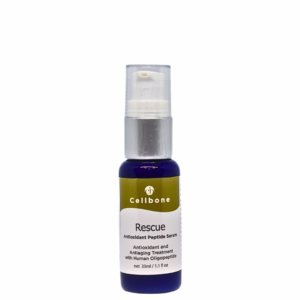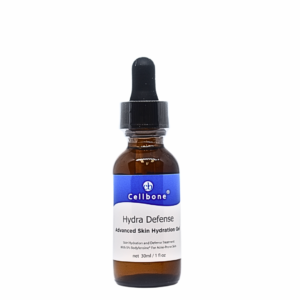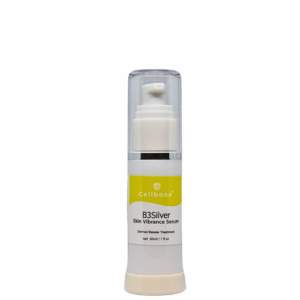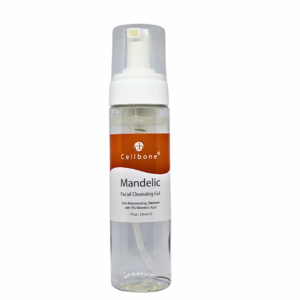THE ULTIMATE GUIDE TO
Adult and Teen
Acne
Signs of Acne
Acne is the blanket term for bumps and blemishes suffered on the skin’s surface. Most prominent on the face, forehead, chest, upper back and shoulders, acne occurs in areas with the greatest number of oil-producing glands (sebaceous glands). While common among teenagers, acne can also affect adults well into their 30s and 40s. Acne in teenage years is most prominent in the t-zone: across the forehead and down the middle of the face. Adult acne is generally focused in the lower part of the face, around the chin and along the jawline.
The different types of acne are:
- Whiteheads (closed, plugged pores with white tips)
- Blackheads (open, plugged pores with black or brown tips)
- Papules (small, red and tender bumps)
- Pustules or Pimples (raised red spots with pus inside)
- Nodules (large, solid and painful bumps beneath the skin surface)
- Cystic Lesions (painful, pus-filled lumps beneath the skin surface
What Causes Acne?
Acne occurs when hair follicles become clogged with dead skin cells or oil from the oil glands they are attached to. People with skin that produces excess oil are more likely to experience the condition. For many females, acne flare-ups are common the week before menstruation due to a hormonal shift. Teens have a faster cell turnover and more resilient skin when compared to adults, meaning faster recovery from breakouts. After the teenage years however, acne tends to improve because hormonal changes have levelled out and no longer fuel breakouts.
The five main causes of acne are:
- Age
- Bacteria on the skin’s
- surface Excess oil production
- Genetics
- Hormonal fluctuations
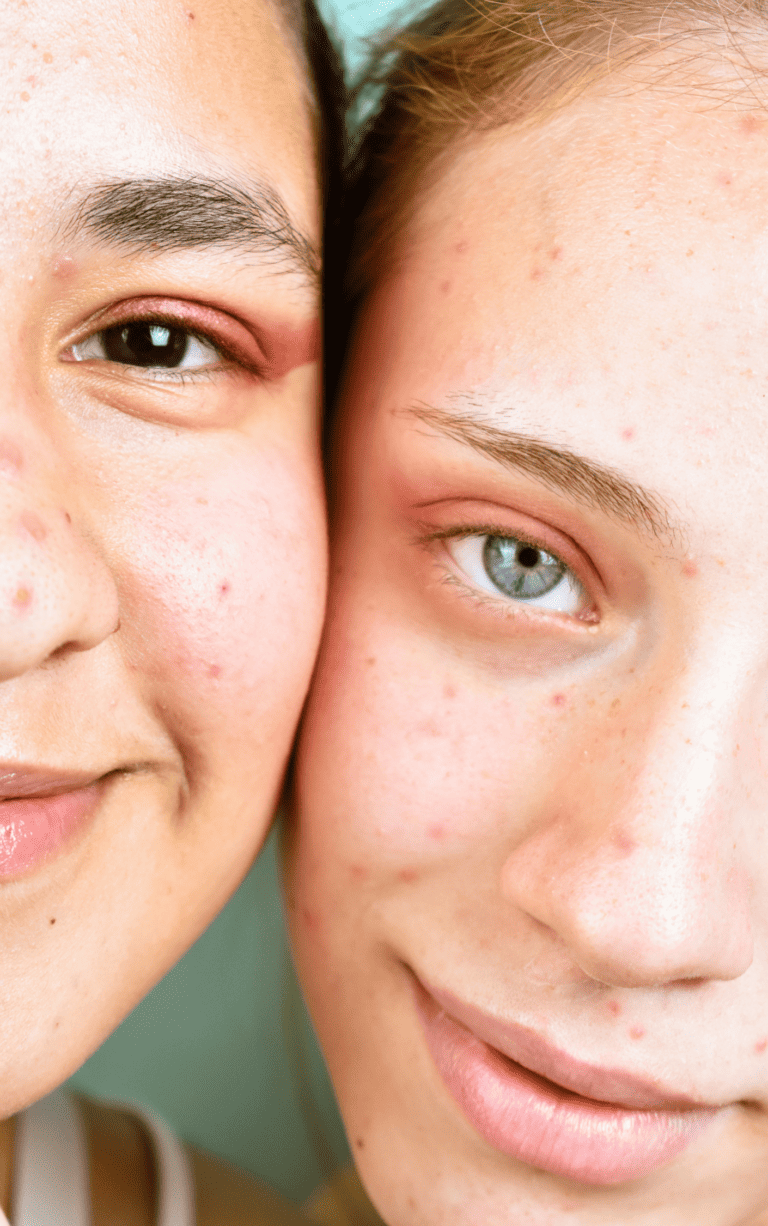
Certain medications, carbohydrate-rich diets and stress can also aggravate acne.
Whiteheads form when the clogged follicle walls bulge outward. Blackheads form when the pore’s clogged plug is open to the surface, the trapped bacteria and oil reacting with the air to create a darkened appearance. Papules and pimples form when blocked follicles become infected with bacteria. Nodules and cystic lesions form deeper inside the hair follicles, producing bumps beneath the surface of the skin.
How To Care For Acne
Other than ensuring the acne-prone area is clean and kept free of any excess oil or dead skin, there is no lasting cure for the condition. There are steps to help minimise the visual severity and discomfort of acne. Treatment of acne is most effective when started at a younger age and will reduce the risk of scarring.
In older adults, the sudden appearance of acne can be a signal of an underlying issue and should be investigated by a medical professional.
To minimise acne we recommend:
- Avoid touching the face
- Avoid using harsh soaps or chemicals on the skin
- Changing towels, sheets and pillowcases weekly
- Never picking at or popping pimples
- Ensuring the hair follicles are not blocked
- Keeping face razor blades clean

- Moisturising daily
- Removing makeup when working out
- Exfoliating once a week
- Using oil-free or non-comedogenic makeup and sunscreen
- Washing the face daily and immediately after working out
Adult Acne Skincare Routine
Morning Routine
Step 1. Mandelic Cleanser
Step 2. Mandelic Vitamin C
Step 3. B3 Silver
Step 4. Hydra Defense
Step 5. SolidiFirm
Step 6. SPF
Evening Routine
Step 1. Double Cleanse – Every Night
Step 2. Rescue Line Serum – Build up to 5 times a week

Additional Product Options
- Mandelic Clarifying Gel Mask (once per week)
- Mandelic Toner ( every 2nd night)
Teen Acne Skincare Routine
Morning Routine
Step 1. Mandelic Cleanser
Step 2. Hydra Defense
Step 3. B3 Silver
Step 4. SolidiFirm
Evening Routine
Step 1. Mandelic Cleanser
Step 2. Rescue Line Serum

Additional Product Options
- Mandelic Clarifying Gel Mask (once per week)
- Mandelic Toner ( every 2nd night)
Recommended Products For Acne
The Ultimate Guides Series
Become one of our Stockists

Here's What Our Costumers Say











